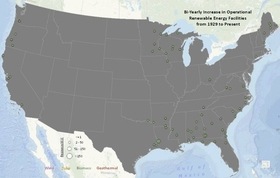President Obama signed an Executive Order "Accelerating Investment in Industrial Energy Efficiency", which comes on the heals of new improved car fuel efficiency standars for 2025.
Meanwhile, Republican Presidential nominee Mitt Romney turned climate change into a punch line during his acceptance speech as the RNC:
Obama has been pretty good about promoting new energy sources, green tech, and efficiency, not so good on climate change however. Romney, on the other hand, represents old, dirty energy production. Gas, coal, oil. No eye for the future, whether new energy sources or climate change.



